New Irish genealogy records and more
New Irish genealogy records top this week’s list of noteworthy new family history collections online from around the globe. Also, find records for Austria, Brazil, France, Germany, Guatemala, Spain, Wales and the U.S. (FBI criminal files and collections for CO, ID,...Stunning Irish Historical Maps and More: New Genealogy Records Online
Digitized Irish historical maps are among new genealogy records online. Also: Irish civil registrations; Irish, British, and Scottish newspapers; Westminster, England Roman Catholic records; wills and probates for Wiltshire, England and, for the U.S., WWI troop transport photos, Tampa (FL) photos, Mayflower descendants, NJ state census 1895, western NY vital records, a NC newspaper, Ohio obituaries, and a Mormon missionary database.
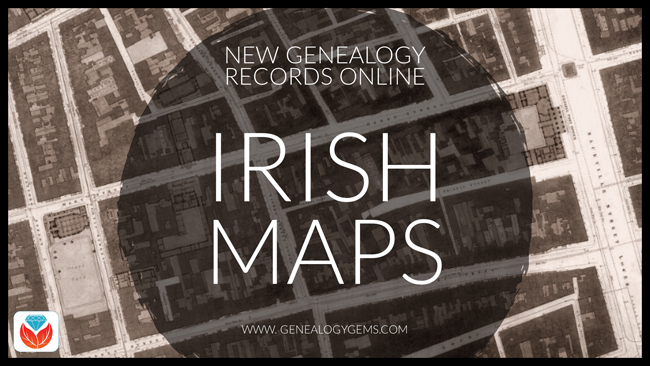
Beautiful Irish historical maps
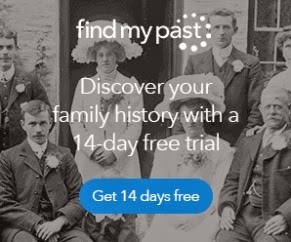 Findmypast.com has published two fantastic new Irish historical map collections:
Findmypast.com has published two fantastic new Irish historical map collections:
- Dublin City Ordnance Survey Maps created in 1847, during the Great Famine. “This large-scale government map, broken up into numerous sheets, displays the locations of all the streets, buildings, gardens, lanes, barracks, hospitals, churches, and landmarks throughout the city,” states a collection description. “You can even see illustrations of the trees in St Steven’s Green.”
- Ireland, Maps and Surveys 1558-1610. These full-color, beautifully-illustrated maps date from the time of the English settlement of Ulster, Ireland. According to a collection description, the maps “were used to inform the settlers of the locations of rivers, bogs, fortifications, harbors, etc. In some illustrations, you will find drawings of wildlife and even sea monsters. Around the harbors, the cartographers took the time to draw meticulously detailed ships with cannons and sailors. Many of the maps also detailed the names of the numerous Gaelic clans and the lands they owned, for example, O’Hanlan in Armagh, O’Neill in Tyrone, O’Connor in Roscommon, etc.”
(Want to explore these maps? Click on the image above for the free 14-day trial membership from Findmypast.com!)
More Ireland genealogy records
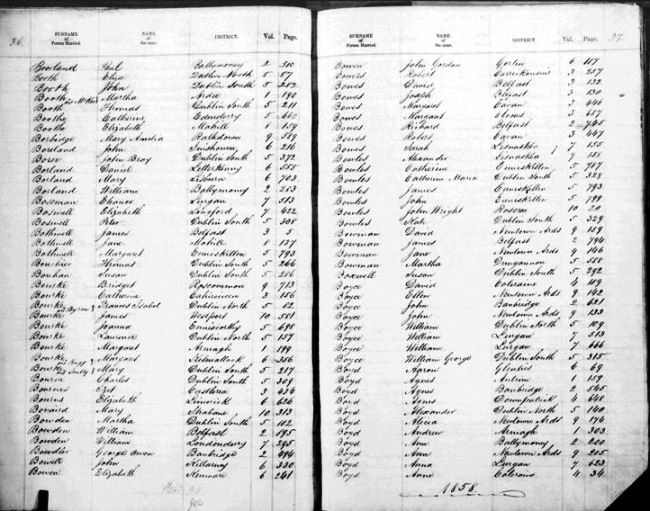
Sample page, Ireland marriage registrations. Image courtesy of FamilySearch.
FamilySearch.org now hosts a free online collection of Ireland Civil Registration records, with births (1864-1913), marriages (1845-1870), and deaths (1864-1870). Images come from original volumes held at the General Register Office. Click here to see a table of what locations and time periods are covered in this database. Note: You can also search free Irish civil registrations at IrishGenealogy.ie.
New at the British Newspaper Archive
The Irish Independent, a new national title for Ireland, is joined in the Archive this week by eight other brand new titles. These include four titles for Scottish counties: Aberdeenshire, Lanarkshire, Angus (Forfanshire) and Wigtownshire. There are also four new papers for England, two of which are from London (Fulham & Hampstead), one for Worcestershire and one for West Yorkshire. Also, significant additions have been made to the British Newspaper Archive’s online coverage for the Brechlin Advertiser (Scotland, added coverage for 1925-1957) and Southend Standard and Essex Weekly Advertiser (added coverage for 1889-1896).
Roman Catholic Records for Westminster, England
Over 121,000 new Roman Catholic parish records for the Diocese of Westminster, England are now available to search on Findmypast.com in their sacramental records collections:
- Parish baptisms. Over 94,000 records. The amount of information in indexed transcripts varies; images may provide additional information such as godparents’ names, officiant, parents’ residence, and sometimes later notes about the baptized person’s marriage.
- Parish marriages. Nearly 9,000 additional Westminster records have been added. Transcripts include couples’ names, marriage information, and father’s names. Original register images may have additional information, such as names of witnesses and degree of relation in cases of nearly-related couples.
- Parish burials. Transcripts include date and place of burial as well as birth year and death; images may have additional information, such as parents’ names and burial or plot details.
- Additional congregational records. More than 16,000 indexed records of confirmations, donations, and other parish records are included here.
London Marriage Licences 1521-1869
Findmypast has published a searchable PDF version of a published volume of thousands of London Marriage Licenses 1521-1869. Search by name, parish, or other keyword. A collection description says, “Records will typically reveal your ancestor’s occupation, marital status, father’s name, previous spouse’s name (if widowed) and corresponding details for their intended spouse.” Note: The full digital text of this book is free to search at Internet Archive.
Wills and Probate Index for Wiltshire, England
Explore more than 130,000 Wiltshire Wills and Probate records in the free Findmypast database, Wiltshire Wills and Probate Index 1530-1881. “Each record consists of a transcript that will reveal your ancestor’s occupation, if they left a will and when they left it,” says a description. “The original Wiltshire wills are held at the Wiltshire and Swindon Archive. The source link in the transcripts will bring you directly to their site where you can view their index and request an image. If you wish to view an image, you will have to contact Wiltshire Council and a small fee may be required for orders by post.”
New records across the United States
WWI: Ancestry.com subscribers may now access a new online collection of photographs of U.S., WWI Troop Transport Ships, 1918-1919. Browse to search by ship name.
Florida. The city of Tampa, Florida has digitized and published two historic photo collections on Hillsborough County Public Library Cooperative Digital Collections:
- The Greater Tampa Chamber of Commerce Collection includes over 30,000 images of Tampa events dating from about 1950 until 1990, and includes many local officials and dignitaries.
- The Tampa Photo Supply Collection includes more than 50,000 images of daily life and special events (weddings, graduations) taken by local commercial photographers between 1940 and 1990, primarily in West Tampa, Ybor City, and South Tampa.
Mayflower descendants. AmericanAncestors.org has published a new database of authenticated Mayflower Pilgrim genealogies: Mayflower Families Fifth Generation Descendants, 1700-1880. The collection includes the carefully-researched names of five generations of Mayflower pilgrim descendants.
New Jersey. The New Jersey State Census of 1895 is now free to search at FamilySearch.org, which also hosts an 1885 New Jersey state census collection. “The state of New Jersey took a state census every 10 years beginning in 1855 and continuing through 1915, says a FamilySearch wiki entry. “The 1885 census is the first to survive in its entirety.” Click here to learn more about state censuses in the United States.
New York. Ancestry.com has published a searchable version of a genealogy reference book, 10,000 Vital Records of Western New York, 1809-1850. According to a collection description, “The 10,000 vital records in this work were drawn from the marriage and death columns of five western New York newspapers published before 1850….Birth announcements were not published in these early newspapers, but many of the marriage and death notices mentioned birth years, birthplaces, and parents’ names, and where appropriate such data has been copied off and recorded here.”
North Carolina. The first 100 years of the Daily Tar Heel newspaper are now free to search in digitized format at the North Carolina Digital Heritage Center. The collection spans 1893-1992 and includes over 73,000 pages from more than 12,000 issues. Click here for a related news article.
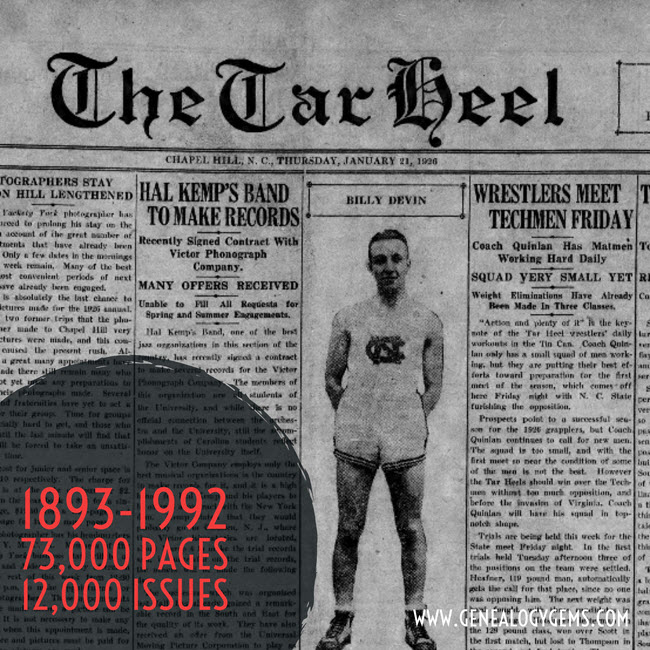
Ohio. FamilySearch also now hosts an index to Ohio, Crawford County Obituaries, 1860-2004, originally supplied by the county genealogical society. Obituaries may be searched or browsed; images may include additional newspaper articles (not just obituaries).
Utah and beyond (Latter-day Saint). The Church of Jesus Christ of Latter-day Saints (Mormons) has published a database of early missionaries. It covers about 40,000 men and women who served between 1830 and 1930, and may link to items from their personal files, including mission registry entries, letters of acceptance, mission journal entries, and photos. Those who are part of FamilySearch’s free global Family Tree will automatically be notified about relatives who appear in this database, and may use a special tool to see how they are related. Others may access the original database here. Click here to read a related news article.
Keep up with new and updated genealogy records online by subscribing to our free weekly email newsletter!
Disclosure: This post contains affiliate links and Genealogy Gems will be compensated if you make a purchase after clicking on these links. Thank you for supporting Genealogy Gems!
Genealogical Evidence and Proof: How to know if you’ve compiled enough evidence
The Genealogical Proof Standard tells us that we need to conduct reasonably exhaustive research in order for our work to be credible. If you’ve ever wondered just what constitutes “reasonable” (and if your family tree is up to snuff) my guest author Kate Eakman, professional genealogist at Legacy Tree Genealogists, has answers.
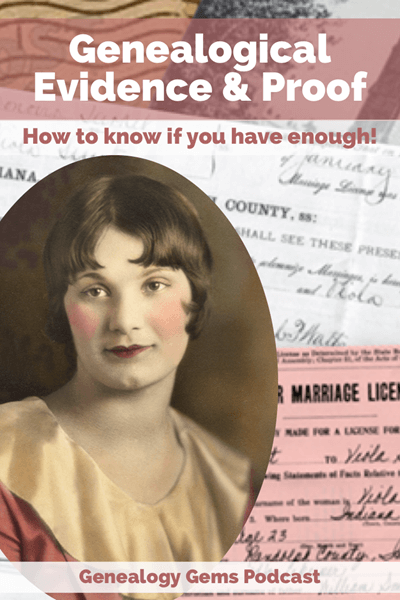
Professional Genealogist Kate Eakman explains evidence on the Genealogy Gems blog.
Genealogical Evidence: Have You Got What It Takes?
How do we know when we have compiled enough evidence to constitute proof?
Is a birth certificate or an autosomal DNA test result sufficient to declare this person is the child of that person?
Must we collect every record regarding an individual – the deeds, the tax lists, the newspaper clippings, the census reports – before we can declare a familial connection?
The Genealogical Proof Standard (GPS)
The Genealogy Proof Standard (GPS) directs us to perform reasonably exhaustive research, which requires that we identify and review all available records related to an individual.[1] This is being as thorough and accurate as possible and is a goal toward which we should all aspire in our genealogical research.
But, let’s be honest: most of us do not want to spend weeks or months (or even years) documenting one person before moving on to the next individual. We don’t want to know every detail of grandpa’s life before we turn to grandma.
We want to build a family tree which accurately provides us with the names of our ancestors so that we can identify our immigrant ancestor, or join a lineage society, or enjoy the satisfaction that comes from a balanced tree extending back a hundred years or more.
We want to be thorough and accurate, but we also want to make some progress. How do we balance the need for accuracy with the desire for results? How do we determine the necessary quality and quantity of evidence for our research?
Below are some guidelines to demonstrate how we can go about compiling the necessary information to say with confidence “this person is my ancestor.”
Genealogical Evidence Guidelines
1. One record/source is never enough.
Any one piece of data can say anything. A mother might lie on her child’s birth certificate for a number of reasons. A grieving spouse might not correctly recall the information for a husband or wife’s death certificate. There are typos and omissions and messy handwriting with which to contend. Even a lone DNA test is not sufficient evidence to prove a family connection.
We need multiple sources, and different kinds of sources, which corroborate the details of the others.

A single source is not enough. A marriage license does not guarantee that John and Griselda married. Photo courtesy https://newspapers.com.
A census report and autosomal DNA test results.
A deed and a will.
A birth certificate and an obituary.
Or, better still, a birth certificate, a census report, a deed, a will, an obituary, and autosomal DNA test results.
2. The more contemporary the source is to the person or event in question, the better.
Records of events made immediately after the event tend to be more accurate, and provide better details, than records created months or years later. As time passes, details become fuzzy, two events can be confused with each other, and our memories fade.
The passage of time between an event and the record of the event also allows for some revisionist history to creep in.
Here are some examples:
A birth year is adjusted to make someone appear older or younger in order to avoid the draft, enlist in the military, mask a dramatic age difference between spouses, or conceal an out-of-wedlock birth.
An obituary ignores the deceased’s first marriage because of some embarrassment associated with that marriage.
A census report enumerates everyone in the household as natives of Stepney, London, when they really were born in Stepney, and Hackney, and Whitechapel, which explains why the baptismal records can’t be found in Stepney.
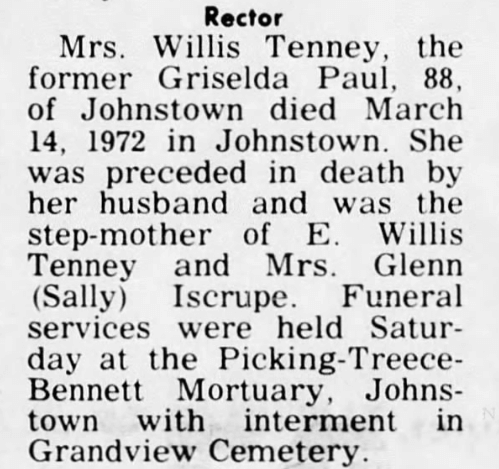
According to this obituary for Griselda, she was the widow of Willis Tenney, not John Wise. It appears Griselda and John did not marry after all. Photo courtesy https://newspapers.com.
According to this obituary for Griselda, she was the widow of Willis Tenney, not John Wise. It appears Griselda and John did not marry after all. Photo courtesy https://newspapers.com.
This is particularly true when it comes to autosomal DNA testing. My autosomal DNA is more useful for identifying my ancestors than is my son’s because I am one generation closer to those ancestors. This is the reason we encourage people to test the oldest members of their family first: their DNA has the potential to be the most useful simply because they are from an earlier generation (or two).
3. It is okay to make appropriate assumptions, but be careful!
In genealogical research we must sometimes make assumptions. When research theories are based on logical reasoning, it is perfectly acceptable to make those appropriate suppositions.
Determining which assumptions are appropriate can be simple: the two-year-old child enumerated in the home of a 90-year-old woman in the 1850 census can safely be eliminated as a biological child of that woman; the man born in 1745 could not have been buried in 1739; the person with whom I share 3150 cM of DNA is my sibling.
The challenge is to avoid making what seems like an appropriate assumption but is really based on faulty reasoning or bias. For instance, we presume that every child listed in a household in the 1860 U.S. Census is son or daughter of the two adults listed first. However, the household could include step-children, cousins, or individuals not even related to the family who were erroneously assigned the same surname.
Other inappropriate assumptions can include:
- the notion that a baby was born within a week of his baptismal date;
- a woman’s reported surname on her marriage certificate is her maiden name;
- there is only one person in any village, town, or city with the name of your ancestor;
- someone who shares 2000 cM of DNA with you must be your grandparent, aunt or uncle, niece or nephew, half sibling, or grandchild (they could be a ¾ sibling, the child of one of your parents and the sibling of the other parent).
4. All of the data from the various sources must correlate, and there can be no unresolved contradictions.
When the birth certificate says Richard was born in 1914, the 1938 newspaper article about his wedding reports Richard was 24 years old and the 1942 World War II Draft Registration card notes Richard’s date of birth occurred in 1914, we can confidently declare Richard was born in 1914.
If the wedding article declared the groom was 23 years old the contradiction could be explained by the time of year in which the wedding occurred – before or after Richard’s birthday.
But if his birth certificate reported a 1914 birth, and the newspaper article noted Richard was 32 years old, while the World War II Draft Registration listed his year of birth as 1920, we have some important contradictions. It is most likely the records are for three different men with the same name.
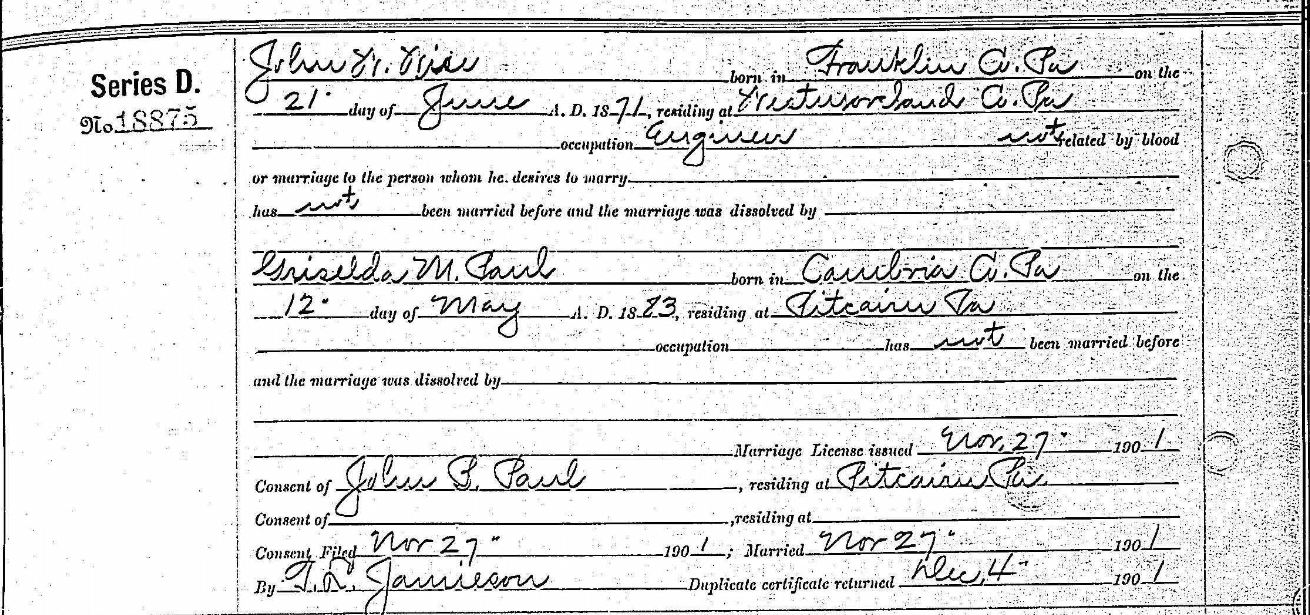
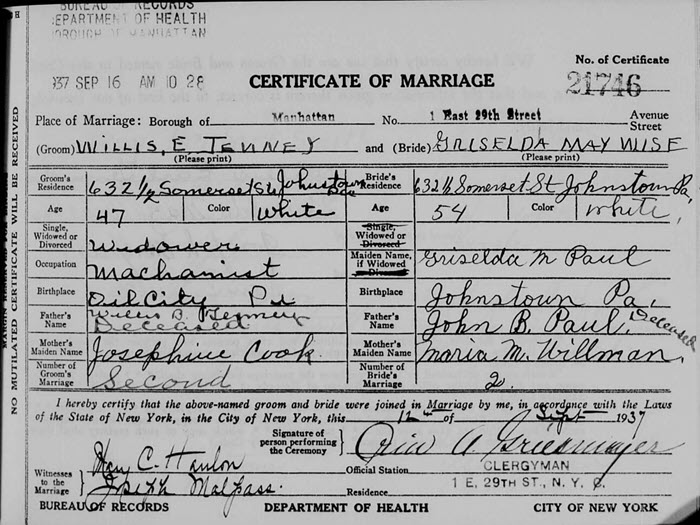
By collecting additional evidence, we finally learn that Griselda and John Wise did marry, and after his death Griselda married Willis Tenney. If we had collected only one of these four records we would not have had the most accurate information regarding Griselda Paul. Photos courtesy https://familysearch.org.
It’s important to remember that once we have accomplished that initial goal of building out our tree a few generations (or identifying our immigrant ancestor, or determining if we are related to that historical person) we can – and should – go back and collect other sources related to that person. This will result in uncovering a more complete story of their lives in the process.
As we can see from the four documents regarding Griselda Paul’s marriages, her story is much more than a simple list of birth, marriage, and death dates. As we identify, review, and analyze the other available sources, Griselda’s story will come alive with the facts and details we uncover.
A Fresh Set of Eyes on Your Genealogy Brick Wall
Sometimes the wrong evidence or assumptions can push us into a brick wall. A fresh set of expert eyes can help you identify the problem, and recommend the sources you need to pursue in order to compile trustworthy evidence.
If you are looking for some assistance in your genealogical research, Legacy Tree Genealogists can help. Our affordable ($100 USD) Genealogist-on-DemandTM Virtual Consultation service provides you with the opportunity for a 45 minute one-on-one discussion of your research with one of our expert genealogists. We can help guide you in evaluating evidence and determining research strategies to move forward with your research confidently.
About the Author: Kate Eckman
Legacy Tree guest blogger Kate Eakman grew up hearing Civil War stories at her father’s knee and fell in love with history and genealogy at an early age. With a master’s degree in history and over 20 years experience as a genealogist, Kate has worked her magic on hundreds of family trees and narratives.
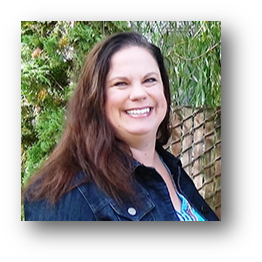
Professional Genealogists Kate Eakman
[1] “Genealogical Proof Standard (GPS),” Board for Certification of Genealogists, https://bcgcertification.org/ethics-standards, accessed March 2020.






